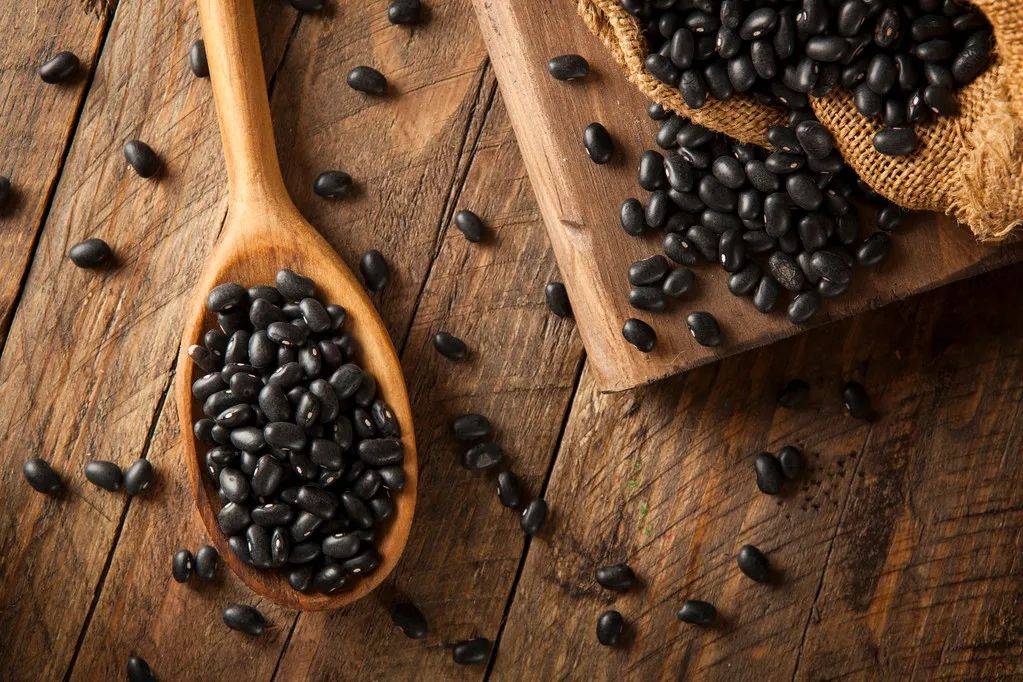Today the weather is hot, and it’s the time when the kidneys are prone to weakness and the spleen and stomach are prone to problems.
At this time, why not try the “1 bean, 2 rice” method to help your family regulate their bodies~
Eat 1 bean, nourish the kidneys and beautify the skin
As the saying goes, “eating beans in summer is better than eating meat.” Summer is also the season when beans are readily available, among which a shiny black bean stands out, which is the black bean.
Black beans, also known as the “grain of the kidneys”, can nourish the skin, enhance complexion, strengthen tendons and bones, and boost energy.
Black beans nourish the kidneys, especially good for treating kidney deficiency and insufficient kidney qi. For example, night sweats are mostly caused by deficient kidney yin and insufficient kidney qi. Eating black beans regularly can help regulate this.
There are various ways to prepare black beans, such as making porridge, grinding into soy milk, stewing soup, or simply boiling them in water.
Black Bean Red Date Glutinous Rice Porridge
Combine black beans and glutinous rice in a 1:4 ratio, add some red dates and a suitable amount of red sugar to make porridge.
This porridge nourishes the spleen and kidneys, promotes blood circulation, diuresis, and is effective in treating lower back pain, edema, night sweats, dizziness, and other symptoms caused by spleen deficiency and kidney deficiency.
Soy Milk
Grind the black beans into soy milk, which allows for nutrient absorption without affecting digestion.
It is important to note that individuals with poor digestion or prone to bloating should avoid black beans. The digestive abilities of the elderly and children are relatively weak, and excessive consumption is also not recommended.
Eat 2 rice, prevent constipation, and lower cholesterol
1. Soapberry Rice: Prevent Constipation
Soapberry rice is actually the fruit of soapberry, also known as snow lotus seeds, soapberry kernel, soapberry essence, etc.
It is a staple food high in carbohydrates, low in protein, and low in fat, with total energy similar to regular rice.
However, unlike regular rice, soapberry rice is rich in soluble dietary fiber (plant gum). After cooking, soapberry rice swells in volume and has a thick texture due to the action of this plant gum.
Some believe that the plant gum in soapberry rice can supplement the body’s collagen, but in reality, its plant gum is a soluble dietary fiber and cannot be further digested and absorbed by the body to have a cosmetic effect.
However, the presence of soapberry rice has its value—
Soapberry rice can relieve constipation, suitable for those prone to constipation;
For diabetes patients, soapberry rice can help control the rate of postprandial blood sugar rise, avoiding rapid fluctuations in blood sugar levels;
For overweight or obese individuals, soapberry rice is also beneficial in inhibiting excessive fat absorption and controlling weight.
Furthermore, many people like to add alkali when cooking porridge to make it thick and sticky. However, alkali can destroy the nutritional components of the porridge. In such cases, adding soapberry rice can also make the porridge thick and tasty.
2. Brown Rice: Lower Cholesterol
Brown rice has become a popular healthful whole grain in recent years, especially suitable for middle-aged and elderly individuals.
It is made by milling unpolished rice, removing the husk, and retaining the germ and bran to produce a light yellow rice, which when further polished becomes the white rice we eat.
Compared to polished white rice, brown rice can also lower cholesterol levels, reducing the risk of heart attacks and stroke.
The coarse fiber molecules in brown rice itself can help gastrointestinal peristalsis and are effective in treating gastrointestinal diseases such as gastritis, constipation, and hemorrhoids.
Additionally, the blood sugar content of brown rice is much lower than that of white rice. For daily cooking, mixing equal parts of white rice and brown rice to make brown rice is recommended.
Tip: Brown rice has a coarse texture and tight consistency, and takes longer to cook. It is advisable to soak it in cold water overnight before cooking, then cook it in a pressure cooker with the soaking water for about half an hour.
All images in this article are from Yitu.com.


